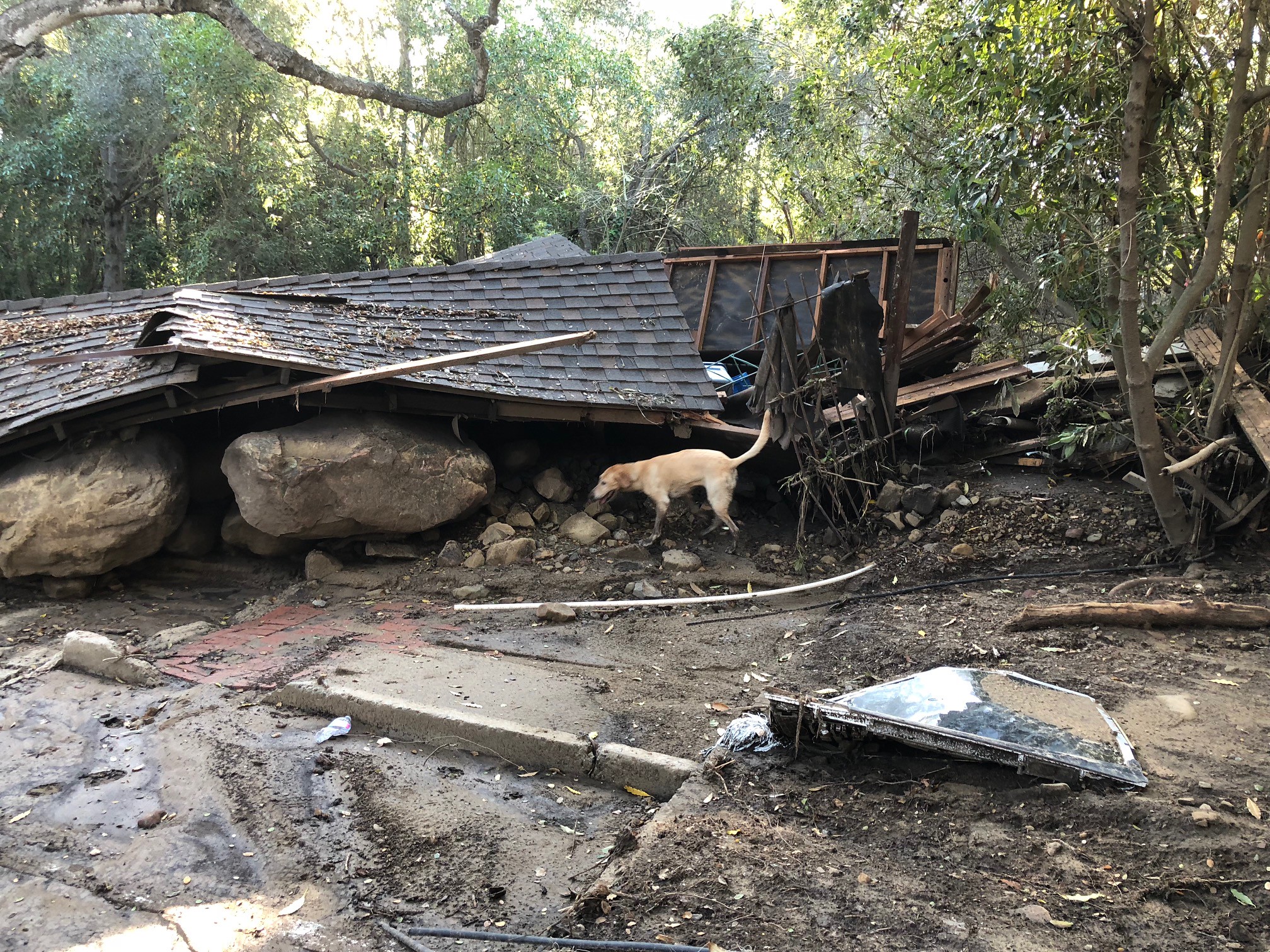Los Angeles County Public Works Forecasts Possible Debris And Mudflows
The County of Los Angeles Department of Public Works is forecasting the potential for debris and mudflows in some areas of the City of Los Angeles and elsewhere in the county, especially in areas of recent wildfires.

In the past few years, several wildfires have burned vegetation in Los Angeles County (including within the Los Angeles City limits) that was integral to the stability of the soil and its resistance to debris and mudflows. The Debris and Mudflow Potential Forecast provides danger levels for the most probable areas susceptible to a dangerous event occurring during the next rainfall. The top LA City areas of concern are the La Tuna Canyon area (Phase 2 danger level) and the Sunland-Tujunga area (Phase 1 danger level). See below for descriptions of the danger levels, and visit the Debris and Mudflow Potential Forecast for a comprehensive list.
If you live in an area that is prone to debris/mud flows or landslides, please prepare accordingly. Visit Ready.gov/landslides-debris-flow for helpful information on how to prepare for the potential event and/or evacuation, and for ALL significant emergencies in Los Angeles please sign up for the following emergency alerts:
- Sign up for LAFD Alerts (LAFD.org/alerts)
- Sign up for LA City Emergency Alerts (NotifyLA.org)
--OR--
- Turn on notifications for LAFD Alerts on Twitter (@LAFD)
- Turn on notifications for LA City Emergency Alerts on Twitter (@NotifyLA)
The debris and mudflow potential forecast is based upon a review of watershed conditions and weather forecasts from the National Weather Service and other weather predicting sources. It represents conditions within the watershed that could lead to debris and mudflow events. Debris and mudflows are highly unpredictable events. The following description is to assist with storm preparedness, in order to plan accordingly.
No Phase
- Rain is forecast by the National Weather Service, but the amount of rain and/or watershed conditions are not anticipated to produce appreciable amounts of debris on streets or specific public infrastructure locations. Reports of debris on private property may be received by emergency response entities. Few, if any, structures are anticipated to be endangered, other than those advised to be prepared to evacuate with any forecast of rain.
Phase 1
- Small isolated debris and mudflows possible at specific public infrastructure locations. Streets may be flooded or blocked by debris. Reports of debris on private property may be received by emergency response entities. A few structures may be endangered, in addition to those advised to be prepared to evacuate with any forecast of rain.
Phase 2
- Moderate debris and mudflows possible at more widespread locations. Some streets may be completely blocked by debris. Depending on location and terrain, some structures may be endangered, in addition to those advised to be prepared to evacuate with any forecast of rain.
Phase 3
- The potential exists for significant debris and mudflows to be widespread over specific areas. Streets may be blocked and considered unsafe for travel. Many structures could be endangered by debris and mudflows. Extreme caution should be exercised below uncontrolled canyons due to sudden debris flows.









